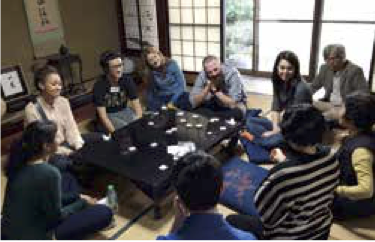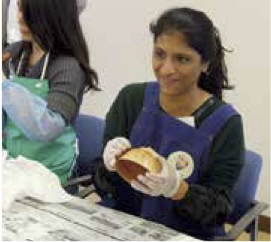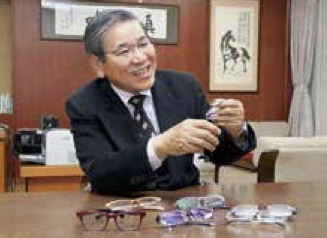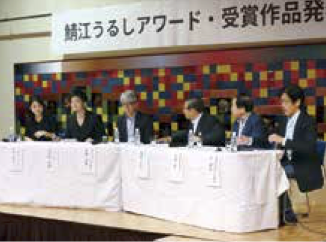Leveraging IT for Regional Revitalization
Sabae and KMD “Traditional Crafts’ Future Project”
A team led by Professor Hiroyuki Kishi is collaborating with the city of Sabae, Fukui on the “Traditional Crafts’ Future Project, ”which seeks to combine design, advanced technology, and interactions with consumers to leverage traditional crafts for regional revitalization. Launched in 2015, the project focuses on Echizen Urushi lacquerware, a traditional craft from Sabae. It has studied the innovative local initiatives already in place and validated the hypotheses behind them. During Phase 1, a new design competition called the “Sabae Urushi Award” was estab- lished to identify works suitable for commercialization. A 3D printer and cutting machine were also installed in the city’s “Urushi-no-Sato Kaikan (Sabae echizen lacquerware tradi- tional industry building)” to create a digital studio in which craftspeople can apply lacquer to new objects, develop new products, and open new markets. In October 2015, as part of an effort to validate an industrial tourism model, KMD brought exchange students from the Pratt Institute in New York to Sabae for hands-on experience with lacquer painting. Their experiences provided fresh perspectives that helped to identify new ways to attract tourists to the city. There is now a plan to develop Sabae as a tourist destination, formulate standard itineraries, and promote them through tourist information websites geared toward international travelers. Sabae City Mayor Hyakuo Makino has high hopes for the project. “The traditional craftspeople in Sabae have a long history of using specialization to improve technology levels, and are known for their innovative approaches. Our goal is to transform the traditional craft into a new industry by leveraging new technology. I think our collaboration with KMD will be a major component in these efforts,” he says. The project will continue to develop products and marketing channels as it refines the industrial tourism model. In the second phase, it plans to leverage 3D printing to innovate production technologies and to strengthen the common “Echizen lacquerware” appellation as a brand of origin. All of this will be done in collaboration with a tourism campaign that aims to improve recognition of the Sabae/ Tannan area within Japan and to establish it as a destination that can compete internationally. In the future, the project aims to bring in traditional crafts with other key attractions in Sabae, such as the cuisine, natural environment, and interesting neighborhoods, offer them as new perspectives for tourism, and merge them in a domestic and interna- tional media strategy.
(This article was written in March 2016.)
Students from Pratt Institute experiencing Japanese lacquer work.


The mayor of Sabae Hyakuo Makino

